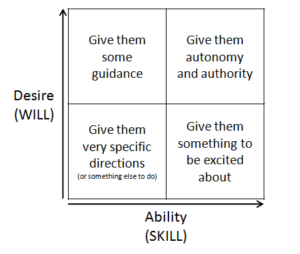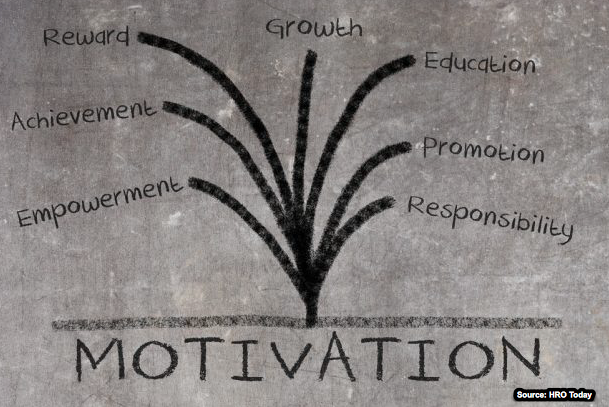Employee motivation is the underpinning of driving leading performance. Surveys consistently reveal an employee engagement deficit. Direct managers play a critical role. But how to tackle. Go R-E-D!
You either are dealing with, have or will deal with motivating employees who are not. They can be people you hired, those you inherited, early career through retirement eligible. Most of all lack of motivation can infect any part of your business.
In a world of scarce resources and performance expectations, you need to solve the motivation problem. Unmotivated colleagues represent unused capacity. Also, team morale takes a hit, and you put employee retention efforts in jeopardy.
Every year surveys confirm an employee engagement deficit. And, the same studies affirm the critical role of direct line managers in employee motivation.
Are you addressing employee motivation issues in your world? I suggest you go R-E-D!

[If you are short on time, click here for a PDF you can print or view later]
Truth Telling In An Airport Bar
I had a manager early in my career whose technical knowledge was impressive. From a leadership perspective, he was uninspiring. He wasn’t happy with his professional lot. I was young (ish), nearly fearless and eager to find out what his deal was.
Nothing like a delayed business flight and lousy airport bar to tackle the tough stuff. So, I went there. I asked, “you don’t seem that motivated to do this job, why do you stay?” Finally, after a long stare, he responded:
I’m not unmotivated, I do my job. I’m just not that into it anymore.
Lessons Learned In Margaritaville
The further I got from you the conversation the more I understood. Numerous learnings emerged about motivating employees. And they inform my thinking and approach.
I struck a nerve. He brought the topic up later several times. He didn’t like being viewed as unmotivated.

The slow burn takeaways for me:
- As an employee how you “feel” comes through loud and clear.
- Motivation is an uncomfortable topic.
- It’s positive if people care enough to be bothered.
- Having someone semi-fearless reflect back truth is a gift.
Some Basics Of Motivating Employees
I think of motivation as desire repeatedly translated into action. We could probably agree on a working definition given time together. What’s more difficult to tackle is how motive renders individually. It is highly personal, unique and dynamic. These factors require leaders to respond in kind.
A host of factors influence motivation including autonomy, authority, recognition, reward, safety, stability, work environment and a sense of purpose. Research is an appropriate guide for understanding the drivers.
Dan Pink provides headlines to help you better understand motivating employees. His TED Talk The Puzzle Of Motivation busts several myths. Additionally, he asserts three elements as the core of motivation – autonomy, mastery, and purpose.
While motivation challenges exist at all experience levels, it’s most noticeable with top talent. And it’s undoubtedly most painful to watch.
The Look Of Career Malaise
Malaise is a dreadful state of being. Harvard Business Review coined career malaise in the article What To Do When Your Heart Isn’t In Anymore.
Career malaise reveals itself with varying levels of acknowledgment. Those who:
1. Admit it.
Usually, this is a good sign. Action likely follows including retooling, reaching out for help, acting out or leaving the organization.
2. Acknowledge to themselves but won’t admit it to you.
You both know it but don’t talk discuss. It’s unhealthy.
3. Don’t recognize it in themselves.
The result is slow atrophy. My manager in the story above was this slow decline.
Go RED: R Is For Reflect – (About You)
Time for a hard look in the mirror.
As a manager, you can’t force motivation. You do play a crucial influencing role. The phrase “shadow of the leader” appears in Stephanie Vozza’s recent Fast Company article. It details the link between employee motivation and their manager.
The central phenomenon is what is called ‘shadow of the leader’…..we are all shaped from childhood by authority figures in our lives. That begins with parents and carries on to bosses. – S Vozza
[Here is her Fast Company article – click here.]
So, what shadow do you cast?
Using Dan Pink’s framework, what support do you provide for them to achieve:
Authority – Do you encourage employees to self-manage as much as possible? How do distribute decision making?
Mastery – Do you enable their efforts to get better?
Purpose – Do they see how their contributions tie to something outside themselves?
In summary, what do your reflections suggest? How can you better enable authority, mastery, and purpose?
Related: 23 Truths About Managing People You Need To Get
Go RED: E Is For Empathy (About Them)
Empathy requires building understanding. Motivating employees depends on it. You need their perspective. What makes them cringe or thrive?
 1. It’s worth a gut check about Skill-Will
1. It’s worth a gut check about Skill-Will
Max Landsberg introduced the Skill/Will grid in his book the Tao of Coaching. You need to be clear on where your employee stands inside this grid.
(Source danspira.com)
If they are low skill, you need specific tactics including moving them out of the role. For low will, press on below.

2. Make sure you know what makes your people tick
- What do they care about professionally and personally?
- What are their aspirations?
- Who influences them internally?
- What opportunity do they have to attain autonomy, mastery, and purpose?
If you don’t yet know what they care about, catch up. The only thing worse than being out of touch is not working to close the gap.
Again, most important, this is about knowing what makes them tick.
Go RED: D Is For Do something (Work You Do Together)
Time to consider possible ways forward.
There is no one recipe for motivating employees. Use the learnings from your reflections and empathy building to select an approach you and your employee will work on together. It’s about addressing the issues and gaps with something that can activate and inspire.
Additionally, here are two targeted strategies to consider:

1. Call To A Problem
Call them to a business unit problem. Include them on a project team where their experience and energy can shine. You don’t need to make up work for them.
Employees on both ends of the experience spectrum find benefit in this. More experienced ones use their expertise to guide and solve. Less experienced bring smarts, new ideas, and energy to a problem. Most of all, you give each some fresh air.
2. Decide Your Legacy
Ask “what do you want your legacy to be?” Appeal to how they want to be remembered. Engage them in work where the business and next generation benefit from their experience and institutional knowledge. This is effective with someone who has an ego and a significant body of work.
A Deceptively Simple Formula For Motivating Employees
You can’t force or require motivation. And solving the motivation puzzle is not entirely your doing.
You do this work with your employees. Your leadership shadow and engagement activate an environment where motivation can flourish.
I get that RED seems a deceptively simple formula. Yet, simple doesn’t remotely imply easy. Success rests on the quality of your reflection and ability to build empathy. There is no express train for either stop. It requires time and thinking. The combination will guide a way forward you and your employee can work.
Where are the motivation issues on your team? Go R-E-D!
Question: How have you been successful in motivating employees?
For a printable PDF click here.


